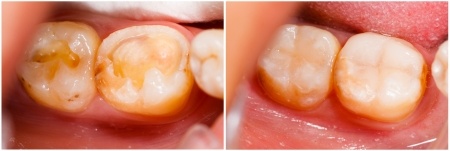 Dental procedures can be frightening and this is the reason many people put off going to a dentist for a tooth filling. This most probably, is because they do not know what to expect. Cavities not only cause bad odor in your mouth, they also can result in several health problems, including heart disease and diabetes. If you know the facts about fillings, it will remove the fear of the unknown and help you make an appointment with your dentist.
Dental procedures can be frightening and this is the reason many people put off going to a dentist for a tooth filling. This most probably, is because they do not know what to expect. Cavities not only cause bad odor in your mouth, they also can result in several health problems, including heart disease and diabetes. If you know the facts about fillings, it will remove the fear of the unknown and help you make an appointment with your dentist.
1. Why are Fillings Necessary?
When you were born, you had no teeth in your mouth. As a result, a newborn baby does not have harmful bacteria in the mouth. However, as the baby learns to crawl, it begins putting things into the mouth and this causes bacteria to find a way to enter the mouth and make themselves right at home. As a result, these bacteria become permanent residents of the mouth and the quest begins to control their proliferation by brushing, flossing and using mouthwashes.
Did you know bacteria live on teeth? So, when you eat food, you also feed them. And, when bacteria feed, they release acids as byproducts and it is these acids that erode the enamel of your teeth, resulting in cavities. Have you ever noticed a sticky white film on your teeth? That is nothing but bacteria proliferating on the surface of your teeth. With regular brushing and flossing you can control oral bacteria, but if you do not have good oral hygiene, the acids produced by the bacteria will cause cavities in your teeth.
Unlike skin, teeth cannot repair themselves. So, if a hole forms on your tooth’s surface, it is there for good; and with time this hole keeps getting bigger and bigger until it reaches the roots of the affected tooth. So, the best way to prevent further damage to your teeth and gums is by visiting a dentist and getting the hole in your tooth filled.
2. Choosing the Right Filling for Your Teeth
Two of the most common fillings are composite filling and amalgam filling. You may know amalgam filling as mercury or silver filling. This filling is made up of silver, tin, mercury, copper and zinc.
Composite filling, also known as white filling, is more in demand, as it is tooth-colored. This filling is composed of minute pieces of silica and a type of plastic resin.
Speak to your dentist about getting the right filling for your teeth. Amalgam filling has been around for a long time, but there is a fear among people the mercury present in the filling is toxic. On the contrary, the filling hardens and the mercury is enclosed within it, making is harmless. Several studies have found amalgam filling is as safe as any other dental filling.
Since people have become more conscious about their looks, they prefer composite filling if the tooth is visible while smiling or talking. This filling is hardened using a blue light and once that happens, it looks like a natural tooth. Though over time, when you consume dark-colored drinks or food, the filling can get discolored. Thankfully, if you visit your dentist for regular teeth cleaning and checkups, this staining can be prevented.
3. Is Your Filling too High?
After your dentist finishes filling your tooth, you may experience sensitivity. Do not worry, as it is natural and will disappear after a few days. However, if the sensitivity occurs only when you bite down, it is a sign your filling is too high. Visit your dentist to file down the filling and reduce its height. And, since it is the filling that is being filed, you will not have to endure local anesthesia.
These are some tooth filling facts that you should be aware of. Having cavities can be painful and result in further serious complications, such as gum disease or root canal. So, rather than letting things get worse, visit your dentist and get those cavities filled.




